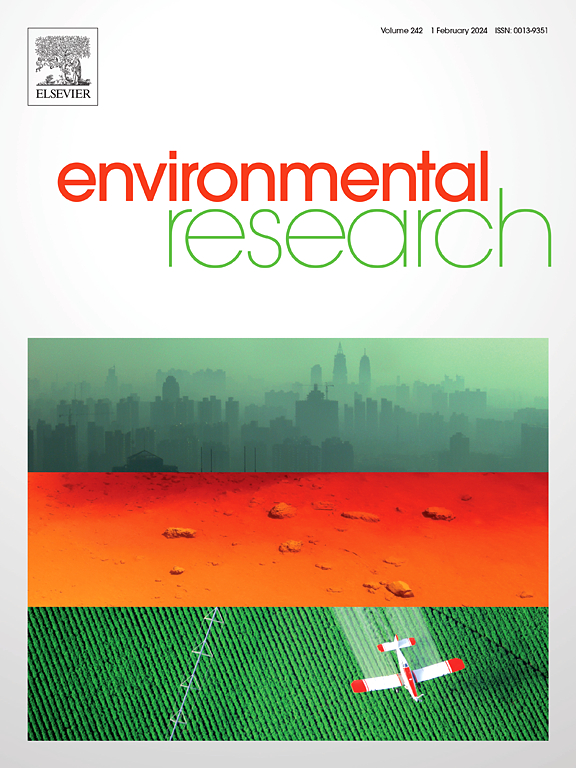Recent advancements in porous sorbent materials and micro solid-phase extraction (μ-SPE) modifications for improved pesticide identification in waste water
IF 7.7
2区 环境科学与生态学
Q1 ENVIRONMENTAL SCIENCES
引用次数: 0
Abstract
The extensive application of pesticides, although advantageous for agricultural productivity, however, it presents considerable hazards to aquatic systems, human health, fauna, and ecosystems. To mitigate these issues, there is an immediate requirement for precise and sensitive analytical techniques to assess residues from pesticides in diverse matrices of environments, such as air, soil, water, and biological entities. It is believed that preconcentration procedures are essential for improving the efficacy and sensitivity of these analyses. One technology that has shown great promise in identifying pesticide residues in contaminated wastewater is the solid phase micro-extraction, often known as micro-SPE (μ-SPE). Although enormous experimental research on μ-SPE has been conducted in previous years using several adsorbent materials. For better pesticide detection in analytical samples, it is imperative to produce a state-of-the-art review of recent developments in porous sorbent materials and μ-SPE modifications. This review gives a thorough primer to μ-SPE, explaining its basic principles and highlighting its numerous developments, such as the fabrication of porous sorbent materials like traditional sorbents, carbon-based materials, metal-organic frameworks (MOFs), polymeric materials, and sorbents based on ionic liquids. Integration of modified μ-SPE procedures with other microextraction methods is also discussed in the paper. These processes include dispersive, magnetic, vortex-assisted, and microwave-assisted approaches. The key determinants that govern the operation of μ-SPE, such as sorbent material, sample volume, the time allowed for extraction, and the conditions for desorption, will be described in detail. In addition to this, the effectiveness of μ-SPE in detecting pesticide residues using GC-MS, as well as identifying potential challenges and opportunities, has been discussed in this review to improve environmental monitoring and large-scale applications.

多孔吸附材料和微固相萃取(μ-SPE)改性在提高废水农药鉴定中的应用研究进展
农药的广泛使用虽然有利于农业生产力,但对水生系统、人类健康、动物和生态系统造成了相当大的危害。为了缓解这些问题,迫切需要精确和敏感的分析技术来评估不同环境中农药残留,如空气、土壤、水和生物实体。预浓缩程序对于提高这些分析的有效性和敏感性是必不可少的。固相微萃取技术(micro-SPE, μ-SPE)是一项在污染废水中农药残留鉴定方面显示出巨大前景的技术。虽然在过去的几年里对μ-SPE进行了大量的实验研究,使用了几种吸附材料。为了在分析样品中更好地检测农药,必须对多孔吸附材料和μ-SPE修饰的最新发展进行最新的回顾。本文对μ-SPE进行了全面的介绍,阐述了它的基本原理,并重点介绍了它的许多发展,如传统吸附剂、碳基材料、金属有机框架(mof)、聚合物材料和基于离子液体的吸附剂等多孔吸附剂的制备。本文还讨论了改进的μ-SPE方法与其他微萃取方法的结合。这些方法包括色散、磁、涡辅助和微波辅助方法。对μ-SPE操作的关键决定因素,如吸附剂材料、样品体积、萃取时间和解吸条件,将进行详细的描述。除此之外,本文还讨论了μ-SPE在GC-MS中检测农药残留的有效性,以及潜在的挑战和机遇,以改善环境监测和大规模应用。
本文章由计算机程序翻译,如有差异,请以英文原文为准。
求助全文
约1分钟内获得全文
求助全文
来源期刊

Environmental Research
环境科学-公共卫生、环境卫生与职业卫生
CiteScore
12.60
自引率
8.40%
发文量
2480
审稿时长
4.7 months
期刊介绍:
The Environmental Research journal presents a broad range of interdisciplinary research, focused on addressing worldwide environmental concerns and featuring innovative findings. Our publication strives to explore relevant anthropogenic issues across various environmental sectors, showcasing practical applications in real-life settings.
 求助内容:
求助内容: 应助结果提醒方式:
应助结果提醒方式:


